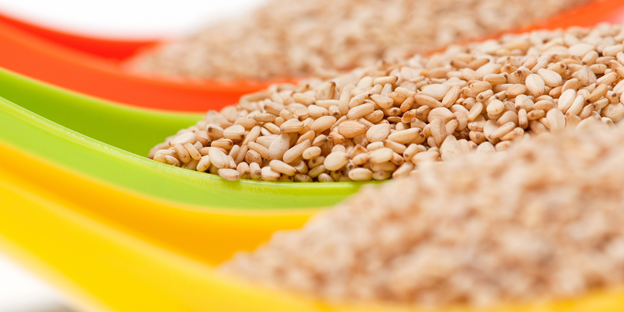Sesame annual acreage of the world is near to 16-17 lakh hectares, India ranks first in both acreage and production in the world. India is also one of the leading and the largest exporters of sesame seeds.
All states in India normally cultivate sesame crop and the main 4 states, viz. Gujarat, Madhya Pradesh, Rajasthan and Uttar Pradesh collectively account for nearly 70 – 75% of the national kharif acreage. In India, sesame cultivation is practiced mostly by marginal and small farmers. Moreover, most farmers raise the crop with either none or minimal inputs.
Good sesame crop requires near to 400-550mm rainfall and with temperature range of 25-35 C. Dry climate is expected for the proper maturity before harvest and also the post-harvesting for drying. The crop is susceptible to several diseases and insect pests. Excessive rains enhance susceptibility to fungal diseases besides causing erosion in quality.
In kharif-2016, sesame was raised on 15,99,900 hectares in India. Bulk of the sowing was done during the last week of June and continued up to the second week of July and the bulk of the crop was harvested during the last week of September and the first fortnight of October.
Methodology followed while collecting data
Near about 1470 farmers have been interviewed as per the set questionnaire and after the thorough interrogation with them, we have come up with the following conclusion.
On the basis of survey, average yields of the selected districts have been estimated. The average yield of the non-surveyed districts has been considered to be equal to that of weighted average yield of the surveyed districts in the state.
This year In Gujarat, there was normal rain year and the rainfall was 250 to 628 mm, however, it was quite moderate and close to the optimal needs of the crop in most sesame growing districts and hence a good productivity has been realized.
The year 2016 was a near normal rainfall year for the country, yet the precipitation was excessive around sesame growing regions. This year, most districts of MP received incessant and excessive rains (more than 1000 mm and up to 1700 mm) which marred the prospects of the crop. Thus, the crop in both MP and UP suffered the same fate.
This season has been rather a bad year for sesame in Rajasthan as well. On an average, during 1st June to 30th September, the state received 33% higher rains (705 mm) than normal (530 mm).
Cultivation of black sesame varieties are prevalent only in some areas of Gujarat. Farmers in Madhya Pradesh, Rajasthan and Uttar Pradesh preferred only white varieties.
As per the reports, the average national kharif 2016 productivity is estimated at 230 kg/ha and accordingly from an acreage of 15,99,900 hectares, a production of 3,67,977 MT has been estimated.





